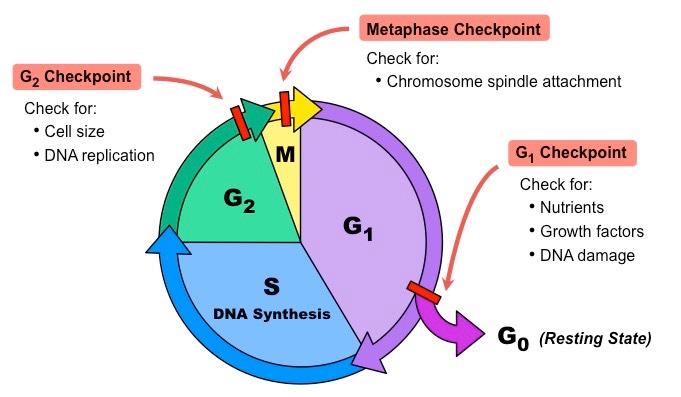Cell cycle checkpoints are mechanisms that ensure the fidelity and continued viability of mitotic division in cells
Multiple checkpoints have been discovered, each with different specific roles:
G1 Checkpoint:
- Determine appropriate growth conditions (sufficient nutrients, cell size, presence of growth factors, etc.)
- Assess level of DNA damage (from ionising radiation or UV)
G2 Checkpoint:
- Determine state of pre-mitotic cell (suitable cell size required for successful division)
- Identify an replication faults (changes to DNA sequence will distort genetic fidelity in daughter cells)
Metaphase Checkpoint:
- Ensure proper spindle assembly and correct attachment to centromeres (prevents non-disjunction events)
Cell Cycle Checkpoints

G0 Stage
Not all cells are continually replicating – some cells may enter into a non-dividing G0 stage
These cells may either be dormant (quiescent) or ageing and deteriorating (senescent)
Cells enter the G0 phase from the G1 phase; quiescent cells may re-enter G1 at a later time (senescent cells do not)
Normally, cells will only divide a finite time before reaching senescence (a typical human cell will divide ~ 40 - 60 times)
Specialised cells will often permanently enter G0, as differentiation has prevented their capacity for further division
Neurons are examples of cells that have been arrested in a G0 state – these cells are amitotic (cannot divide)
